Piece by Piece | Local Aficionados Cultivate Art Collections
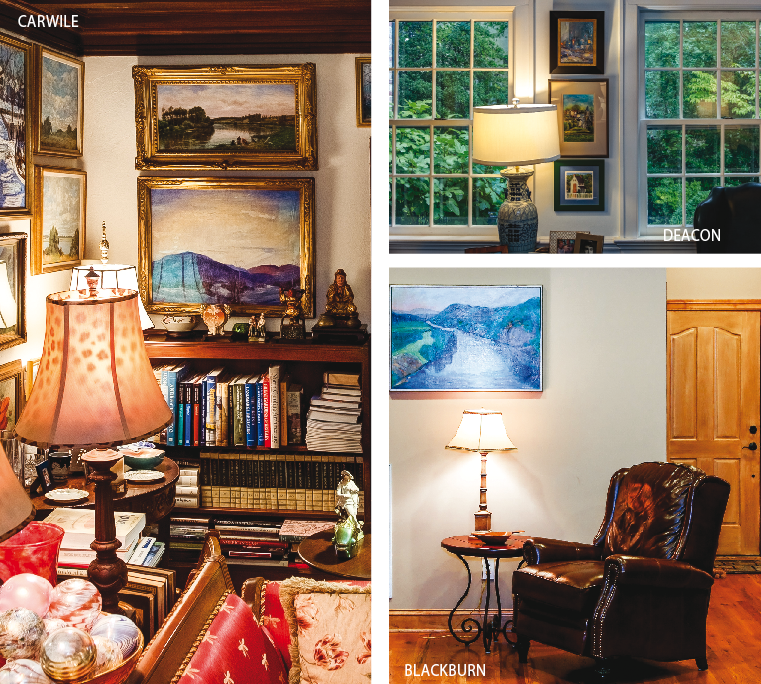
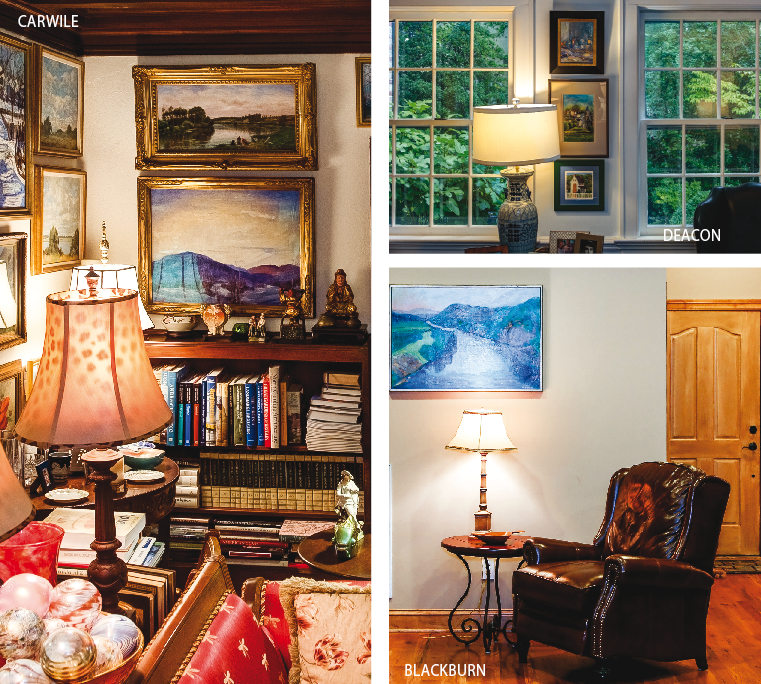
Nobel-prize winning playwright George Bernard Shaw once said,
“Without art, the crudeness of reality would make the world unbearable.” Shaw would undoubtedly find comfort in Lynchburg, as it has both a thriving art community and those who see value in curating their own unique collections. We took time to talk with three area connoisseurs.
Here are their stories…
Jay Blackburn has always been a collector. There were coins, and stamps, records. But when he got his first piece of artwork as a young adult, he didn’t know that it would become the cornerstone of his extensive art collection.
“My father was a physician, and when he retired and closed his office, he gave me one of the paintings,” Jay says. It was a very colorful abstract by well-known local artist Jimmie Kyle.
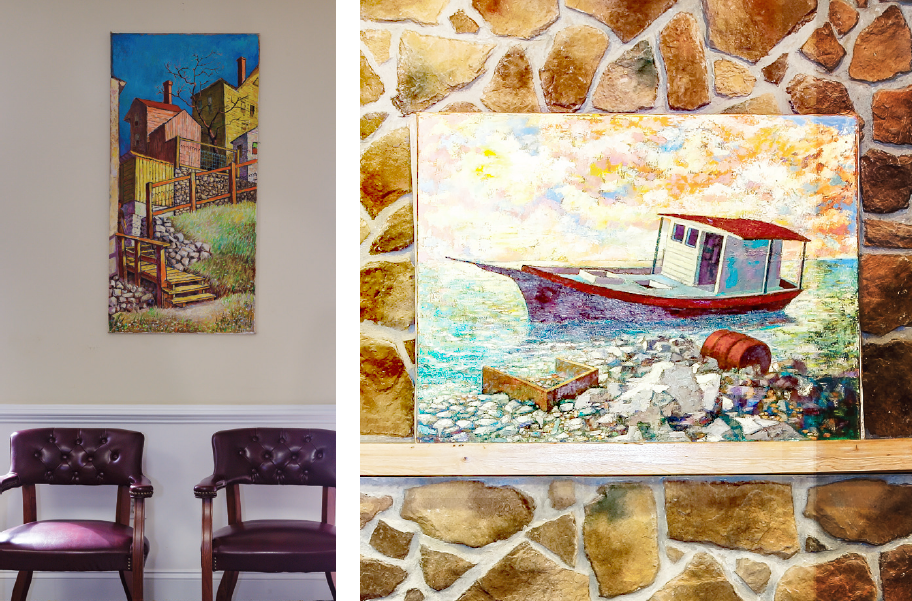
Jay, an optician who owns McBride Blackburn Opticians in Lynchburg, didn’t know then that the painting was considered desirable. (It is his wife Tammy’s favorite, and currently hangs above their dining room mantel.) But as his collection has grown, so has his knowledge.
He credits German artist Bernhard Gutmann (1869-1936) with helping the arts thrive in the region. Back in 1895, Gutmann helped form the Lynchburg Art Club, became the first supervisor of art in Lynchburg public schools, and taught art at both Lynchburg High School and Randolph-Macon Woman’s College.
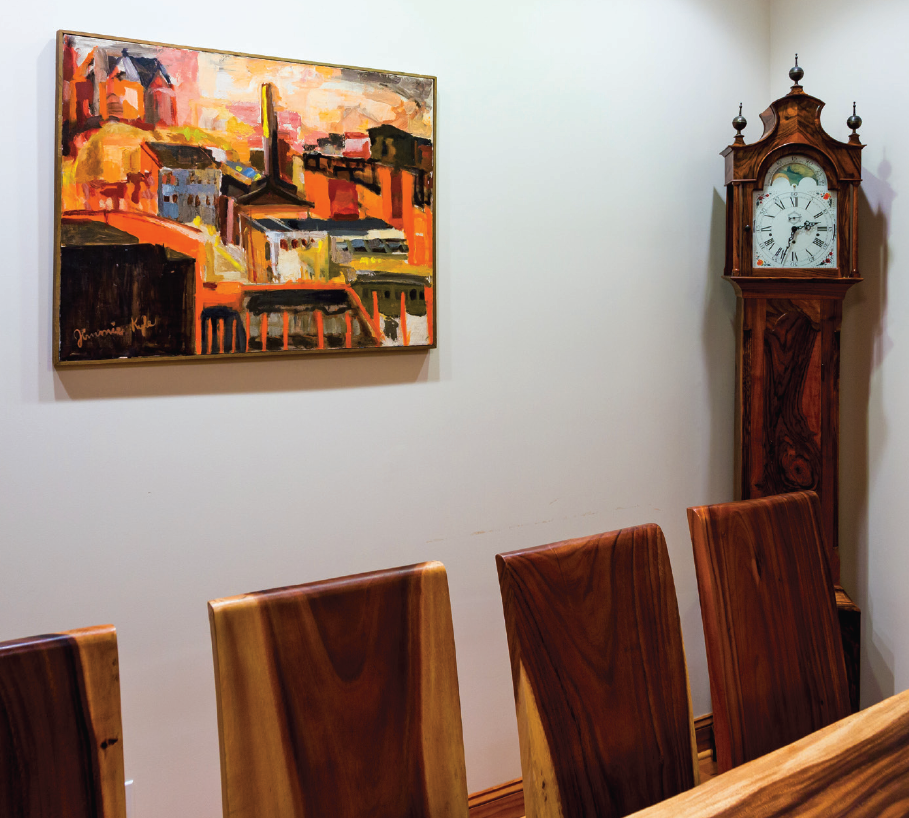
Jay’s Gutmann piece, a view of Spain’s Palma Harbor painted in the 1920s and titled “Church and Commerce,” is displayed on an office wall. He has no qualms about picking it off one wall and hanging it on another. In fact, every wall at McBride Blackburn, including the back rooms, offers phenomenal pieces of art, which Jay rotates as the mood strikes. The works are functional as well as beautiful—the paintings are conversation pieces, and a new, proper prescription might highlight a previously undiscovered aspect of a favorite scene. He strives to build lasting relationships with customers, many of whom he greets by name with a smile, and the art helps them connect. Some clients have even added to his collection.
One woman, says Jay, inherited a piece by Georgia Morgan, a Lynchburg artist who co-founded the Lynchburg Civic Art League in 1932 and worked tirelessly to promote art education and exhibits for people of all races and socioeconomic backgrounds. She didn’t dislike it, but didn’t really have a place for it. So she slipped it under her bed, where it remained, mostly forgotten, for decades. When she saw another Morgan painting at Jay’s office, she asked if he might like hers, and they struck a deal. Another client saw a small Julia McHood painting hanging that caught her eye. She had a similar piece, a 5.5 x 7 inch of the Quaker Meeting House on Fort Avenue titled “The Manhood,” that she had kept in a drawer, which she offered to him. She declined to cash Jay’s check, saying she was happy to have the art be appreciated by others.
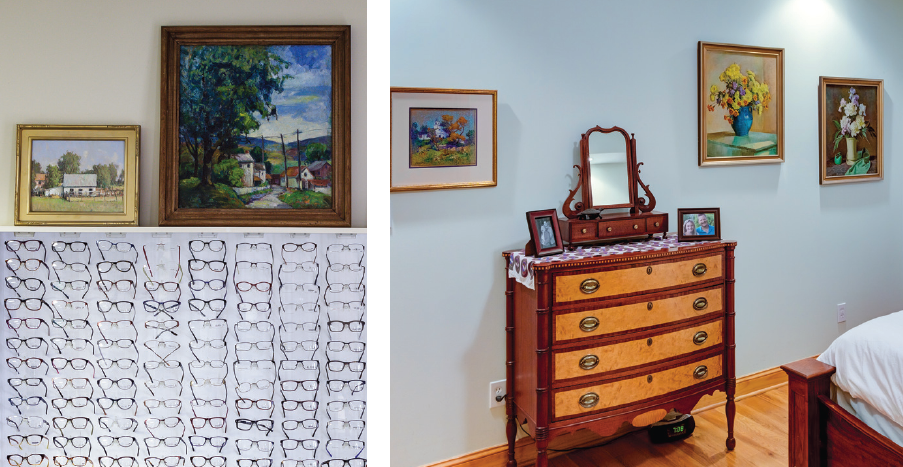
While there are a few regional artists Jay is still looking to acquire, his collection is becoming more focused. His only steadfast rule is that the artist be connected to Central Virginia in some way. He has works from the 1800s to present, pictorial landscapes to bustling city streets, abstract to almost photographic. And because of limited space (“I honestly have more art than I can hang,” he says), he’s more particular about purchases. Now, it’s also about the hunt—he adds to his collection from estate sales, auctions and a lot through word of mouth—and about discovering new things about artists connected to the region. Surprises, he says, are usually welcome. For example, he bought a painting he thought was by nineteenth century artist Flavius Fisher. In having the work professionally restored, the artist was revealed to be “Mrs. Flavius Fisher”. The landscape of Tobacco Row Mountain, says Jay, “Well, it is one of my favorites.”
Artist and collector Phillip D. Carwile was exposed to Quality art as a kindergarten student in Lynchburg. “Julia McHood was my teacher,” he says, and recalls with photographic precision the illustrations she created to go with the nursery rhymes they learned. She had a continuous piece of brown paper spooled between two wooden dowels, and would scroll through dozens of images of the Three Little Pigs, Little Red Riding Hood, and Little Miss Muffet as she taught the lessons. “What kid wouldn’t be hooked on art after you’ve seen that?” he asks earnestly. He’s taken many roads in life, but eventually all lead back to his passion for art.
After high school and community college, Phillip joined the Navy, where he served as a yeoman for the captain aboard the USS Wright. He clerked for tobacco company G. Stallings, then earned an art degree from VCU, and worked as the both the gardener and curator at the Edgar Allen Poe Museum (“The gardening position paid better,” he quips.) Eventually, he got a job working in the Social Security Department in Richmond, but transferred to Lynchburg when an opening presented itself.
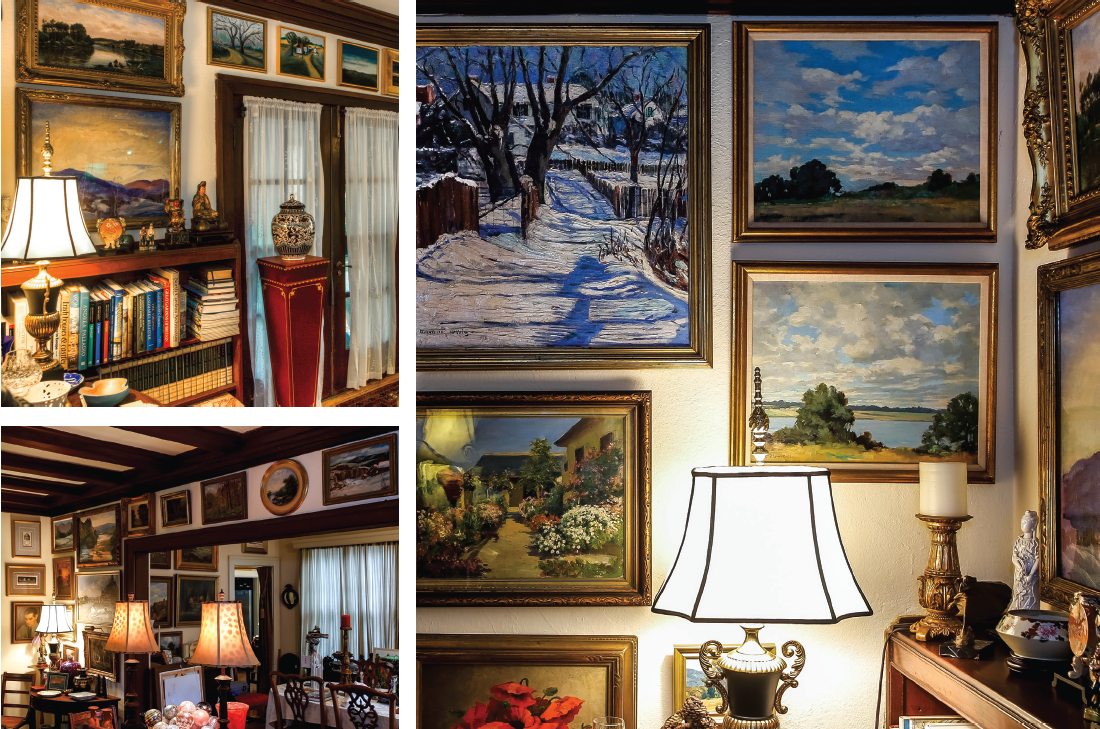
He landed on Pearl Street (of note: he bought the 9,000-square-foot home that once belonged to Lynchburg artist Margaret Kirkpatrick) and eventually moved to a smaller house on Fort Avenue. Back in the Hill City, Phillip, who had always collected art—his only criteria had been that he had to like it a lot, and it had to not be exorbitantly priced—began to immerse himself in the local art scene, and to hone his collection.
There is not a surface in his house that is not covered with art. Even the floor holds vertical stacks of canvases. Paintings line every square inch of every wall, and he knows information about each piece of art, along with personal and professional anecdotes about the artists, and what was happening locally (and globally) at the time of production. He is quick to point out some favorites in a vast collection which includes dozens of his own works. (A student of plein air artist Ron Boehmer, Phillip’s own painting style has evolved from picturesque landscapes and realistic cowboys to abstracts.)
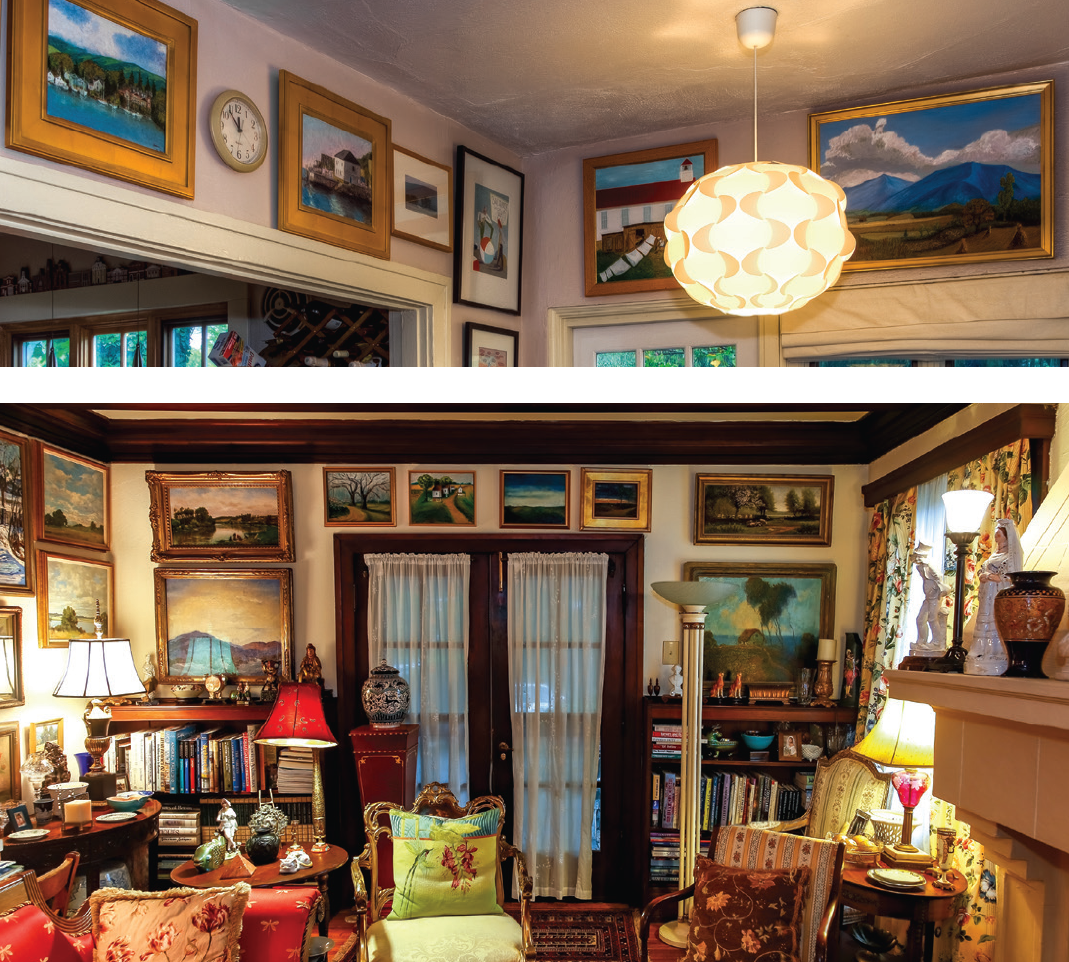
His favorites are currently in his living room, which is dedicated to oils. There is a Narcissus Diaz de la Pena of a wooded scene, dappled with light. “If you go to the great museums throughout the world, his work will be there,” he says. There is a Jules Roblin of the River Valley in France, notable for its pastel palette, and its story. He saw the painting for sale at Betty Davidson’s Estate Specialists and asked for the price, as it was not marked, but Betty was out of the store. When he returned a few days later to inquire again, the painting had been sold. Years later, the painting came back to the store, “The owner ‘changed her colors,’” laughs Phillip. There is a small, round pastoral scene by Hudson River painter William Hart. Georgia Morgan’s “Silent Night,” is a serene snowy evening scene in deep blues. Other favorites include a snow scene by Margaret Helbig, and a Jonas Lie (regarded as one of the best-known American impressionist landscape and seascape painters of his time) that once belonged to the Kirkpatrick family.
While not actively looking to acquire more works, Phillip finds himself browsing estate and yard sales, antique shops and auctions. Mostly, he says, he learns about pieces by word of mouth. Although he owns works by masters, he is quick to give high marks to Central Virginia’s vast array of artists. “My knowledge of art and art history probably led me to seek out certain artists,” he says, “All of these [local] artists are connected and intertwined, and they all have an influence on one another. The important thing is that they all made a living from art. They all had to be able to teach to do that… but because of that, there is a continuity between the artists, between the generations.”
Troy Deacon says he has neither the time nor patience to create paintings of his own. But he has a keen eye, scores of friends and clients in both the arts and interior design spheres, and a laser-sharp focus of what he wants to collect. “I’ve always collected scenes because I can relate to them,” says Troy, who works in investments for Bank of the James. “Psychologically, it’s nice to have art that you can relate to.”
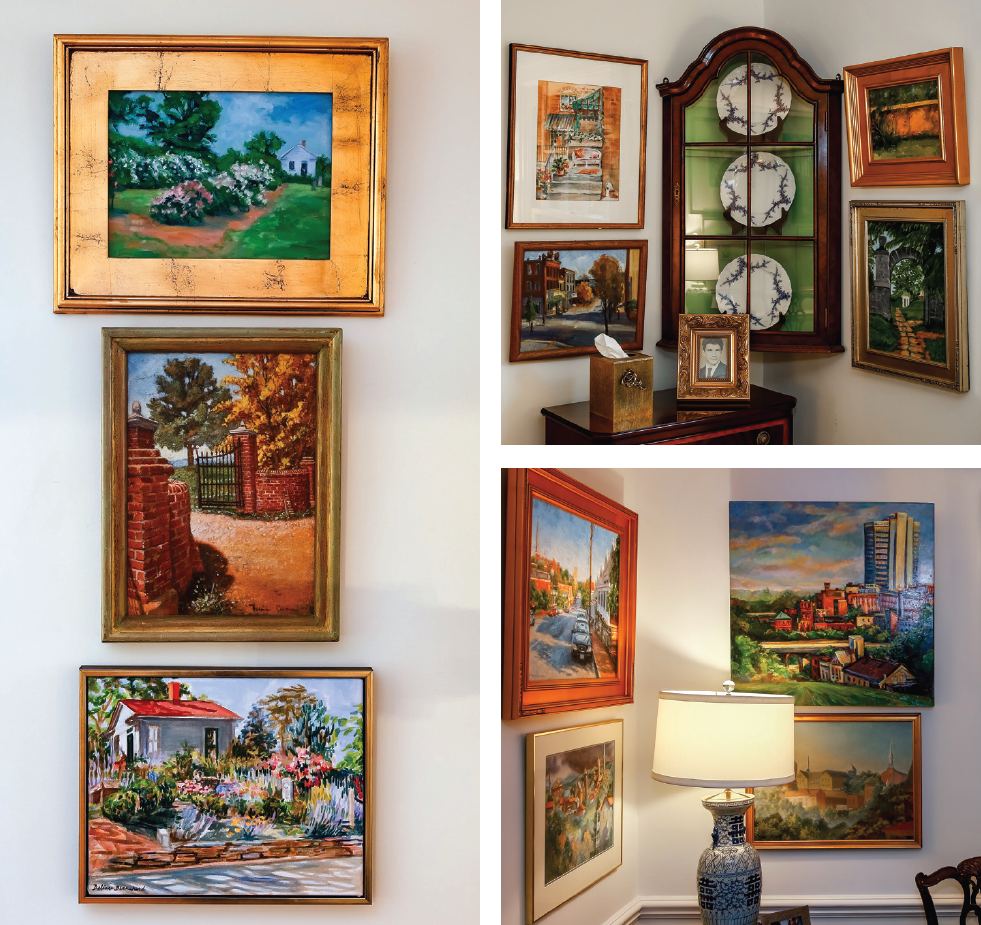
Troy had an interest in local art years ago, but was space limited in his first place, an apartment at Riverviews. “Eight hundred square feet for two people is just really not a lot of space,” says Troy, who also owns High Cotton Fine Home Furnishings & Gifts in the Boonsboro Shopping Center. Prodding from his friend and well-known local watercolorist Annie Massie (“She’s just so collectible,”) and a move to a home in historic Daniels Hill, started him collecting in earnest. He would hit tag sales, visit consignment shops, and attend First Friday events. “Things just have a way of coming up,” he says.
Now living on Rivermont Avenue, Troy’s home displays dozens and dozens of places in Lynchburg; downtown is featured prominently in his collection, which includes a handful of paintings by Massie and Carwile. There are images of the Visitors Center, the Community Market, the home of Dr. Robert Johnson, the Miller-Claytor House, Court Street, Anne Spencer’s cottage Edankraal, the Dabney Scott Adams House. He will occasionally let museums and nonprofits borrow a piece. “There’s no rhyme or reason to it,” Deacon says, “I just have to like it.”
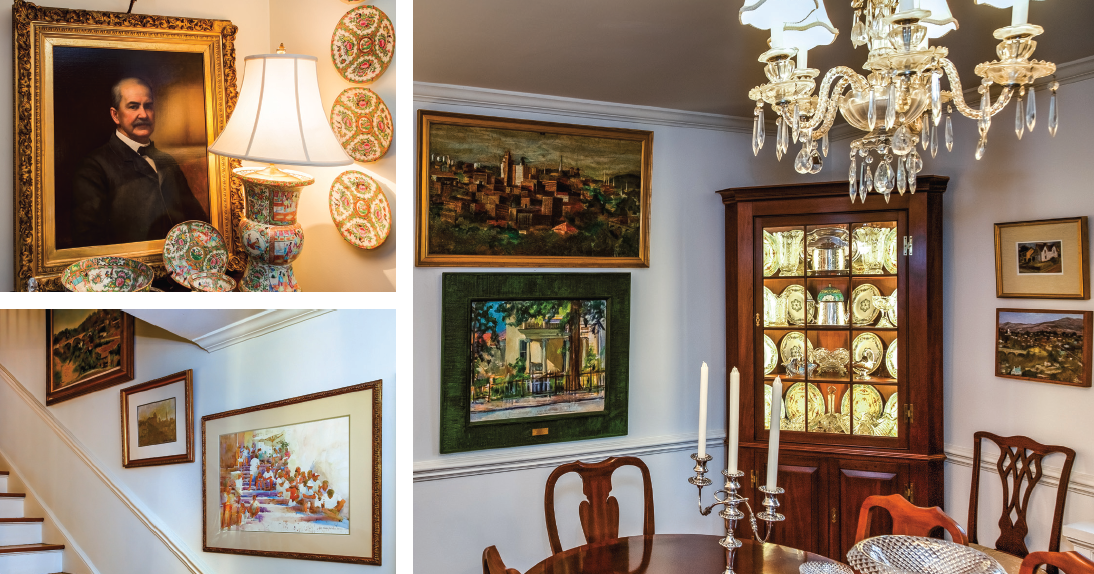
What he likes, a lot, is the Old City Cemetery. (His husband, Ted Delaney, is its director.) A great deal of his large collection is dedicated to the historic site. A standout is a piece he commissioned by local artist Kelly Gravely Mattox. Troy was so committed to his vision of what he wanted the painting to look like, he took a photo of the scene, printed it on a large canvas and gave it to Mattox as a blueprint. She delivered. “It’s my favorite piece,” he says without hesitation.
A series he is particularly proud of is a five-piece body of the original pen and ink drawings done by Ann van de Graaf (who was born and raised in Africa and England before coming to Lynchburg for college) that chronicles the Civil Rights Movement in Lynchburg. Another work that brings him joy is a bird’s-eye view of downtown. Among Troy’s oldest works, a piece by Helen Shouse was actually created with layers of papier-mâché, and church steeples fashioned from aluminum foil.
“Ted and I are very fortunate to have met people in our younger years like Annie Massie and Phil Carwile to teach us the significance of Lynchburg artists and their work,” says Troy. “Every Lynchburger new and old should collect a piece of history from this town that everyone falls in love with.”
Photography by Craig Shaffer






